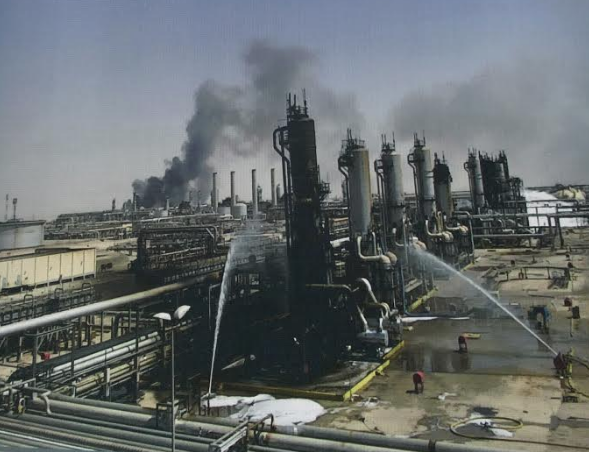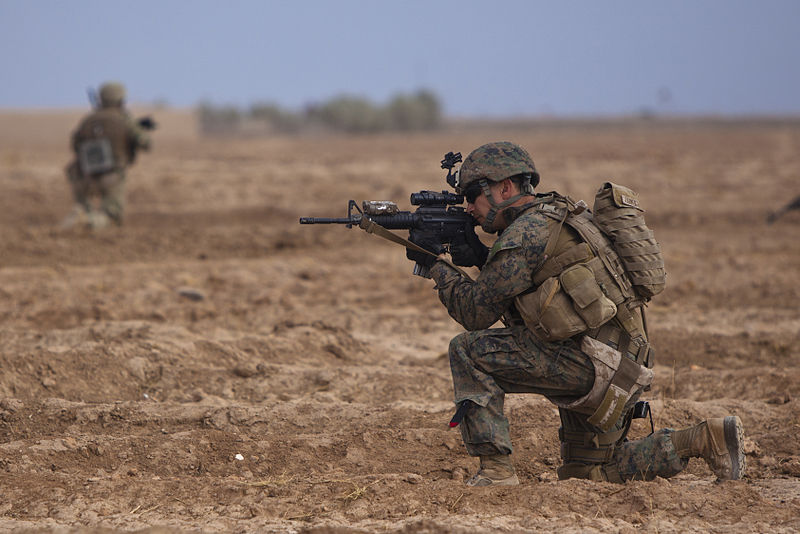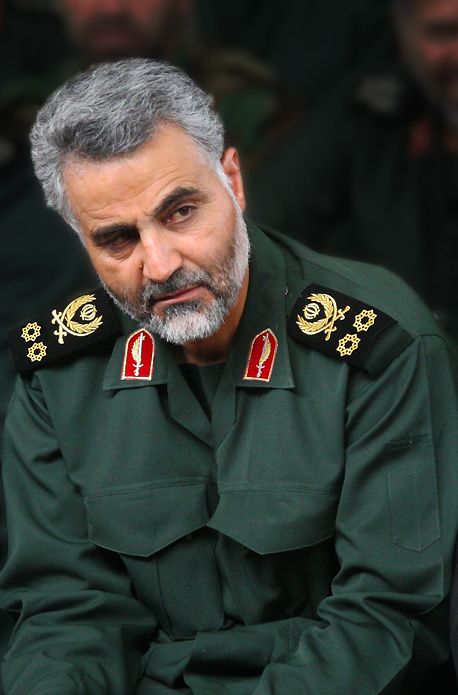Brent crude has tumbled down to $24/barrel- the price of other varieties of crude is reigning abysmally low – due to the extinguishing of demand due to lockdown in big fuel consuming countries like China, India, Europe etc. in the wake of the fast spreading Coronavirus. There are clear and real worries that this dystopian nightmare may be further aggravated by the clouds of wars that are hovering over West Asia triggered by, both, the American desire to fix Iran, and also to increase oil prices to a level that brings sanity in oil-producing countries.
Reports from West Asia indicate of an aggravation of conflict between the United States Defense Forces and the Coronavirus racked Islamic Republic of Iran. US President Donald Trump has threatened Iran that if it tries a sneaky attack at US forces in Iraq then it would be met with severe retaliation. This war of words could be the beginning of something more fiery and bloody in a year when the US elections its new President. US and Israel have been attacking Iran claiming that it is encouraging interests hostile to them. The bitter truth is that Iran’s intervention prevented the break up Syria and helped in vanquishing the rampaging Islamic State that managed to get covert support from the Western powers.
The big question is that will Russia — another oil producer who is getting hurt by the fall in oil prices — look the other way? Besides, what will then happen to the global fight against Coronavirus that has left the world economy in tatters?
The government of Iran has been lobbying for the lifting of US sanctions and has not shied away from attacking Washington for the spread of the virus, calling it a bio weapon. In response, instead of easing the sanctions, Washington has tightened them. It has also threatened to blow up reserves of all those countries that are storing Iranian oil against their sanctions.

Iran, that officially claims the death of 2,700 people from Coronavirus, and directly linked it to American sanctions, has been denied access to the Johns Hopkins University data base for the virus and other crucial medical equipment and emergency supplies. It is only in the last one week that the barter-based system put together by EU countries to side-step US sanctions has brought together some medical supplies to Iran. From this standpoint the virus has grievously hurt not just its top leadership, but also its most important fighting arm — the revolutionary guards.
The US, that is seeing a huge spike in the number of deaths in its own territory, recognizes that this is the best time to take out the Iranian leadership as they believe it is losing legitimacy from a population that is living in isolation and suffering, as ravages of the pandemic and a collapsed economy spreads across its troubled landscape. Israel, where the lockdown allowed Bibi Netanyahu not just to hang on to power, but also to combust the opposition, is backing the US in this enterprise to neuter Iran. Its attack on alleged Iranian assets in Syria have increased manifold.
Russian warnings to abstain from bombing Syria have not stopped them from their military adventures. Now that the political uncertainty in Israel has ended, with Netanyahu and his challenger Benjamin Gantz sharing power, there is greater likelihood of Israel’s grand designs to scupper Iran’s ambitions to deepen its military and cultural influence in West Asia and beyond.
The other fear that the Saudis and others have is that if hostilities escalate then Iran could shut down the Strait of Hormuz. And when that happens, a different kind of crises will take hold of the world. That will be difficult to negotiate
A reason for the US to exercise the war option would be to revive its ‘shale industry’ that has keeled to a halt after Saudi Arabia’s spat with Russia — both top global producers who want to increase oil production to destroy competition. After Saudi Arabia threatened to increase production, but also refused to increase oil prices, it became an existential challenge for Russia to follow the same path — so that it not only snuffs out the US shale industry that is viable on $47 plus dollars, but also all the producers who pump oil at a higher rate. Saudi Arabia and Russia oil production viability is at a lower price.

India’s Oil & Natural Gas Company (ONGC) pumps at $31 per barrel and could be equally impacted by this collapse of oil. The dilemma for companies like ONGC is that if they stop producing oil – then, it could be a tad difficult to revive it again. Shale shutdown is easy to reverse.
Though oil and gas constitute only 3.8 per cent of the global GDP of $86 trillion, it has a far greater reach than these figures suggests. Three big producers, United States, Russia and Saudi Arabia – produce 33 million barrels per day and pretty much control the ebb and flow of the world economy. They are also deeply invested in the oil sector and in the economies of West Asia. Big start ups that are driving the digital world are funded by oil money.
Iran, that claims the death of 2,700 people from Coronavirus has directly linked it to American sanctions, has been denied access to the Johns Hopkins University data base and medical equipment and emergency supplies. Iran has been devastated by the virus that has impacted not just its top leadership, but also its most important fighting arm — the revolutionary guards.
In the past decade or so, US had given an impression of liberating itself of West Asia when shale oil allowed them to be energy independent, but the happenings of the past months has upset its best laid plans to get out of the West Asian and South Asian region. If oil continues to potter around at $20/barrel, it makes sense for the US to remain invested in Saudi Arabia and the region. Similarly, they would even be forced to reconsider their decision to withdraw completely from Afghanistan where they have signed an agreement with Taliban.
In other words, the world is in a major whirl after the Covid 19 virus became a global pandemic. If, indeed, the oil prices are to return to an acceptable profitable level — not only would the lockdown have to be lifted, but also the US may have to resort to a limited war with Iran. It came quite close to fighting one when its suicide drone assassinated Qasim Suleimani, Iran’s highly influential head of Quds force, accused of enlarging the arc of its military influence and keeping Saudi Arabia and Israel at bay.
Iran had then retaliated by bombing a US occupied airfield in Iraq; but Washington, surprisingly, backed off from a real scrap. This was the first time after the Vietnam War that a US base had been attacked.
Saudi Arabia, who had been goading the Americans in the past to rein in Iran, had rushed to Washington to prevent them from waging a war on the West Asian nation. Riyadh was cognizant that the war could spill over to their country, which has not been able to defeat Yemen with whom it has been in a bloody war for so many years. Even after the attack on its oil refinery in Khurais and Abqaiq, Saudi Arabia held the American hand back from attacking Iran.

The other fear that the Saudis and others have is that if hostilities escalate then Iran could shut down the 21-kilometer wide Strait of Hormuz. And when that happens, then, a different kind of crises will take hold of the world. This will be a difficult crisis to negotiate.
Indeed, the big question is that will Russia — another oil producer who is getting hurt by the fall in oil prices — look the other way? Besides, what will then happen to the global fight against Coronavirus that has left the world economy in tatters?